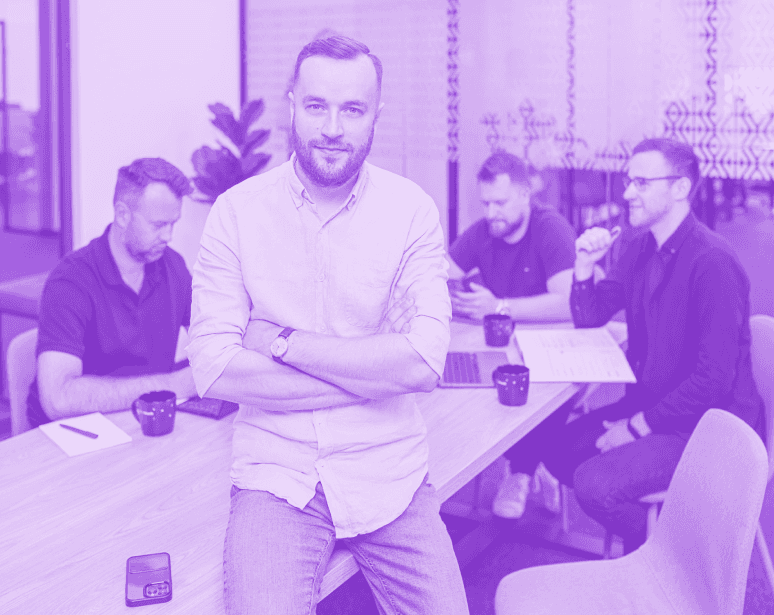Remember that satisfying feeling when you completed a level in a game? Now imagine bringing that same excitement into everyday tasks—like studying, doing sports, working, or shopping. This is where gamification comes in. For some, it’s still seen as just an “add-on”—a nice feature, but not essential. Yet gamification examples in mobile apps like Duolingo or Strava clearly show how powerful a role it plays in boosting user engagement. It’s not just a trendy buzzword—it’s a psychological strategy that works, and it doesn’t have to be expensive to implement.
What is Gamification, Exactly?
Gamification is the use of elements commonly found in games—such as points, badges, leaderboards, challenges, or rewards—in areas not traditionally associated with gaming. The goal is simple: increase engagement. These game-inspired mechanics become a driving force in sectors like education, fitness, productivity, health, and e-commerce.
Why Does Gamification Work?
On the surface, we study to gain knowledge, exercise for health, and shop because we need things. But that’s only part of the story. Often:
- we learn because progress feels rewarding,
- we train because competition motivates us,
- we shop because we enjoy surprises and discovering new things.
Gamification works because it taps into deep psychological needs: the need for achievement, competition, recognition, and exploration.
What is a Reward and Why Praise is a Powerful One Too
Games don’t exist without rewards. Depending on the type of gamification, rewards can take many forms:
- Badges
- Praise
- Placement on user leaderboards
- Discounts and coupons
- Points that can be exchanged for items from a reward catalog or for additional discounts
- Unlocking special features within the app
Rewards don’t always need to have monetary value or real-world utility. Praise, badges, or leaderboard positions can be just as effective because they offer a sense of progress and recognition. These types of rewards make users feel seen and appreciated. In popular apps, badges often have unique names like “Local Legend” (Strava), “Quest Explorer,” or “Flawless Finisher” (Duolingo), which further enhance the feeling of achievement.
Types and Gamification Examples in Mobile Apps
1. Individual Gamification: Competing with Yourself
It is a relatively easy type of gamification to implement, where the user is rewarded for progress or consistency. It utilizes data the user is already entering—like the number of completed lessons, workout duration, sleep hours, calories, or reps.
Example mechanics:
- Praise and badges for consistency—e.g. for completing 3 workouts a week
- Streaks—praise and badges for completing a task several days in a row (like daily running, language study, or going to bed on time)
- Beating personal records—longest run, best progress, fastest time on a route, highest quiz score
2. Social Gamification: Competing with Others
This type of gamification doesn’t always require social features, such as interacting with others or visiting their profiles. Sometimes it’s enough to simply show the user where they rank or how they compare to others. If maintaining user anonymity is important but you still want competition, this is a perfect approach. You just need to tell the user:
“Your result today puts you in the top 5% of fastest runners.”
Other examples:
- “Your streak is one of the longest among all users!”
- “You’re in the top 10% of students with the best attendance.”
- “This month, you ranked in the top 10% of users with the best results!”
If your app allows user interactions, you can go even further with social gamification, such as:
- Group leaderboards
- Shared challenges
- Feeds with others’ achievements
- Praises or “likes”
This feature becomes more valuable once your app has a large enough user base to sustain an active community.
3. Gamification Based on Special Challenges: Missions and Tasks
This type of gamification revolves around completing special tasks in order to earn a reward.
Examples from apps that use challenge-based gamification:
- E-commerce: Rewards (e.g. discount, free shipping, or small gift) for submitting a product review or sharing a photo of a styled outfit
- Retail, e-commerce: features like “Spin the Wheel” or “Scratch Cards” for discovering a random Reward (discount, points, or in-store gift)
- Retail, e-commerce: Reward (discount or points) for completing a survey
- Sponsored challenges: “Reach 20,000 steps for 5 days straight to compete for a grand prize from our sponsor and receive discount codes”
- Bowling Venue app: The user must find 5 hidden treasures at the location (using AR or QR codes) to unlock a free game or drink discount at the bar
Want to increase user engagement? We’ll help you choose the right type of gamification for your app’s needs.
Contact usHow Others Do It: Practical Gamification Examples in Mobile Apps
1. Duolingo – Addictive Language Learning
Duolingo, the world’s most popular language learning app, is one of the best gamification examples in mobile apps connected with education. It masterfully combines different types of motivation, creating an engaging and enjoyable language learning experience. The creators themselves admitted that their goal was to design a tool that would make learning addictive – and they’ve certainly succeeded!
Here are some gamification examples in Duolingo:
Individual Gamification
- Streaks – users are rewarded for using the app daily, e.g., “You’ve been learning for 56 days in a row!”
- XP Points (Experience Points) – earned for each completed lesson; users can track their progress over time.
- Badges and animations – after finishing a lesson, users are greeted with praise, confetti, and success sounds to enhance positive emotions.
Social Gamification
- Leaderboards (Leagues) – users compete in 30-person groups; each week, the top performers are promoted to higher leagues, from Bronze to Diamond.
- XP comparison – users see how many points others have earned, which drives motivation.
- “Friend’s Streak” mode – invite friends to join and maintain a regular learning streak together.
Special Challenges
- Weekly or monthly challenges – e.g., “Earn 1,000 XP in a week to receive a special badge.”
- Surprise cards in “Crown Chest” mode – after completing several lessons, users unlock a chest with a random reward.
2. Strava – Gamified Social Experience for Athletes
Strava is an app primarily known among runners and cyclists. In 2023, the giant reached 120 million registered users. While Strava emphasizes the social aspect and can be considered a type of social media platform, that’s only part of its success. Thanks to its well-designed gamification elements—like badges and leaderboards—users are eager to return again and again.
Here are some gamification examples in Strava:
Individual Gamification
- Personal Records (PRs) – the app automatically tracks your best times and distances, e.g., “Your best 5K time!”
- Segment Progress – users can monitor their improvements on specific parts of a route and receive praises.
- Progress Charts – Strava displays activity stats on a daily, weekly, and monthly basis.
Social Gamification
- Segments & Leaderboards – users can compete with others on specific sections of a route. Top performers are listed on public leaderboards.
- KOM/QOM Badge (King/Queen of the Mountain) – the most prestigious badge awarded for the fastest time on a segment.
Special Challenges
- Official Monthly Challenges – e.g., “Run 200 km in January” or “Complete 10 workouts in May.” After completing the challenge, users earn a badge for their profile.
- Sponsored Challenges – partners like Nike, Adidas, or Zwift host their own events with real-world rewards (e.g., discounts, vouchers, or access to limited-edition gear).
3. Forest – New Level of Progress Visualization
The main goal of the Forest app is to help users stay focused and manage their time by planting virtual trees. The trees grow during focus sessions when users avoid using their phones.
Individual Gamification
Users track their progress toward goals using streaks (consecutive days of goal completion) and virtual trees that grow as they stay off their phones and focus on tasks. This data is visualized on a progress board, reinforcing a sense of achievement.
Social Gamification
Forest allows users to share their results on social media and take part in challenges together with friends. The app also includes a leaderboard feature, enabling users to compare their performance with others—an effective gamification element that encourages friendly competition.
Special Challenges
- Forest offers various challenges, such as daily tasks (e.g., staying focused for a set amount of time) and unlocking new types of plants or achievements for completing specific goals.
- Planting Real Trees. Forest has one of the most unique gamification examples in mobile apps, and that is the opportunity to contribute to real-world impact. For a certain number of virtual trees planted in the app, the organization Trees for the Future plants actual trees in different regions around the world.
4. Lidl Plus – Surprises That Encourage Shopping
Lidl is a discount supermarket chain, primarily known in Europe. In its loyalty app, Lidl Plus, the challenge-based gamification revolves around a scratch card system that users can “reveal” after making a purchase. Each scratch card offers the chance to win a discount or reward, motivating users to visit the store more frequently and engage more actively with the app.
The scratch card can contain various rewards, such as product discounts, coupons for future purchases, or other special promotions.
The rewards are randomized, which adds an element of excitement and encourages continued use of the app in hopes of unlocking better discounts.
Similar gamification examples can be found in other loyalty apps for global brands such as: Starbucks, Tesco, McDonald’s, Sephora to name a few. These also use challenges and surprise-based incentives to boost customer engagement.
3. Habitica – Daily Chores Become Pure Fun
Habitica is an app that has attracted millions of users by changing the way we think about daily tasks. What once were boring to-do lists are now an exciting game. Here are some examples of gamification in the app:
Individual Gamification
- Rewards for Progress – For completing tasks or maintaining habits, users earn experience points and gold, which can be spent on in-game purchases (e.g., character equipment).
- Experience Points (XP) and Levels – Users earn experience points for completing tasks, and their character “grows” with each level.
Social Gamification
- Group Challenges – The app offers group challenges where users complete specific tasks or habits as a team, competing against other groups. These can include challenges related to physical activity, learning, or personal development.
- Leaderboards – Habitica features a public leaderboard where users can compare their results with others.
Special Challenges
Daily Challenges and Tasks – Habitica regularly adds new challenges and tasks that users can complete within a specified time. Completing them rewards users with experience points, gold, and rewards. These tasks can be related to habits (e.g., drinking water) or larger challenges (e.g., fitness tasks).
Gamification in Your App? Take the First Step
You don’t need to create a whole ecosystem with rankings, challenges, and trophies right away. You likely already have data that just needs to be slightly transformed and dressed in a gamification framework:
- Badges for progress
- Notifications reminding of streaks
- Weekly challenges





